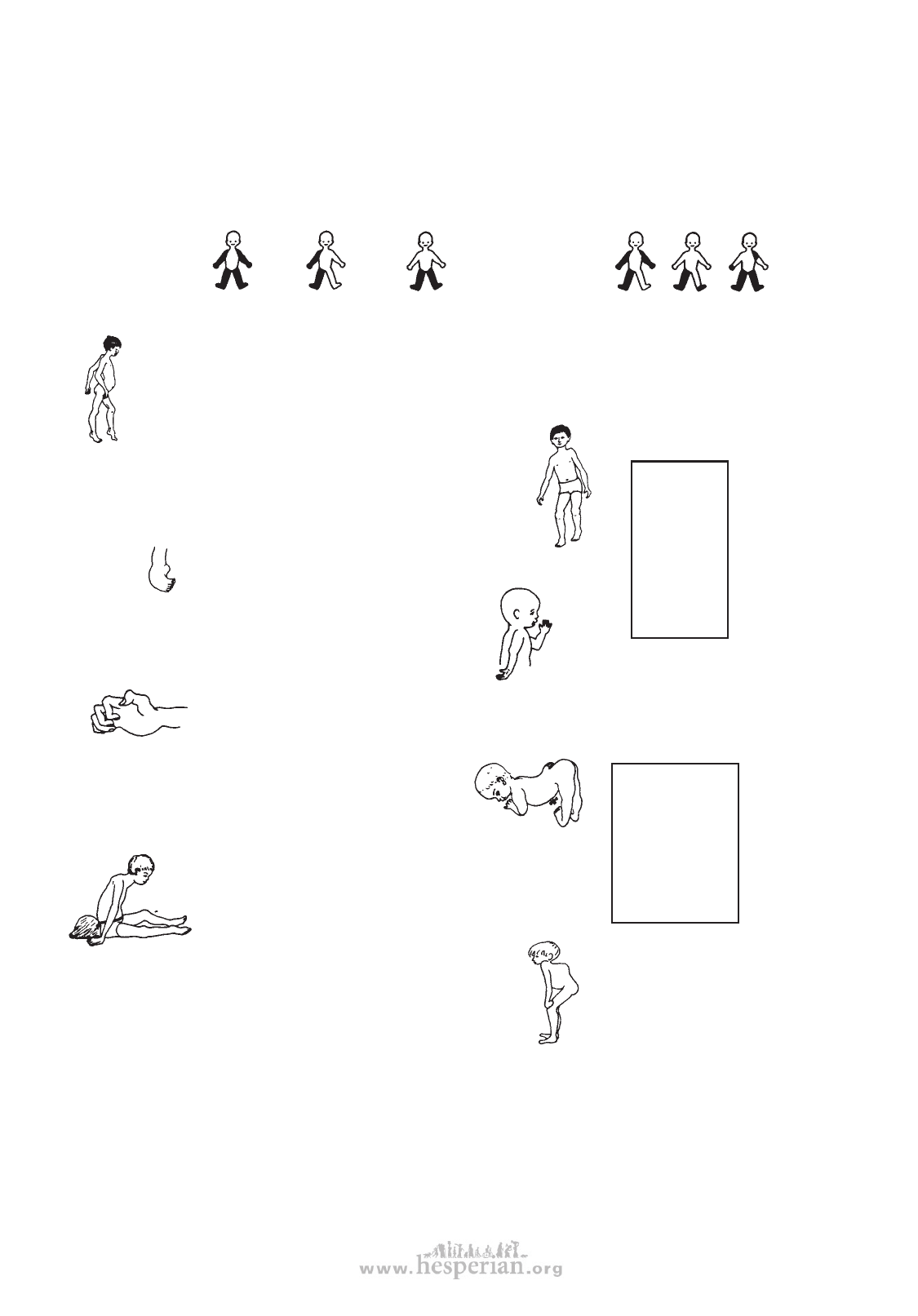
62 chapter 7
WHAT OTHER DISABILITIES CAN BE CONFUSED WITH POLIO?
• Sometimes cerebral palsy can be mistaken for polio—especially cerebral palsy of the
‘floppy’ type.
However, cerebral palsy usually affects the
body in typical patterns:
Polio has a more irregular
pattern of paralysis:
CEREBRAL
PALSY
all 4
limbs
arm and
leg on
same
side
both
legs
POLIO
In cerebral palsy, usually you can find other signs of brain damage: over-active
knee jerks and abnormal reflexes (see p. 88), developmental delay, awkward or
uncontrolled movement, or at least some muscle tenseness (spasticity).
• In muscular dystrophy, paralysis begins little by little and steadily gets worse
(see p. 109).
• Hip problems (see p. 155) can cause limping, and
muscles may become thin and weak. Check hips for
pain or dislocations. (Note: Dislocated hip may also
occur secondary to polio.)
• Clubbed foot is present from birth (see p. 114).
• ‘Erb’s palsy’, or partial paralysis in one arm and
hand, comes from birth injury to the shoulder
(see p. 127).
Note: Polio
can occur
before or
after a child
has any of
these other
problems.
Check
carefully.
• Leprosy. Foot and hand paralysis begins gradually
in older child. Often there are skin patches and loss
of feeling (see p. 215).
• Spina bifida is present from birth. There is
reduced feeling in the feet, and often a lump
(or scar from surgery) on the back (see p. 167).
• Injuries to the spinal cord (see p. 175) or to
particular nerves going to the arms or legs. There
is usually a history of a severe back or neck
injury, and loss of feeling in the paralyzed part.
• Tuberculosis of the spine can cause
gradual or suddenly increasing paralysis of the
lower body. Look for typical bump on spine (see
p. 165).
ALWAYS
EXAMINE THE
BACK IN A
CHILD WITH
PARALYSIS
OF THE LEGS,
AND CHECK
FOR FEELING.
• Other causes of paralysis or muscle weakness. There are many causes of floppy
paralysis similar to polio. One of the most common is ‘Guillain-Barre’ paralysis. This
can result from a virus infection, from poisoning, or from unknown causes. It usually
begins without warning in the legs, and may spread within a few days to paralyze the
whole body. Sometimes feeling is also reduced. Usually strength slowly returns, partly
or completely, in several weeks or months. Rehabilitation and prevention of secondary
problems are basically the same as for polio.
Disabled village Children